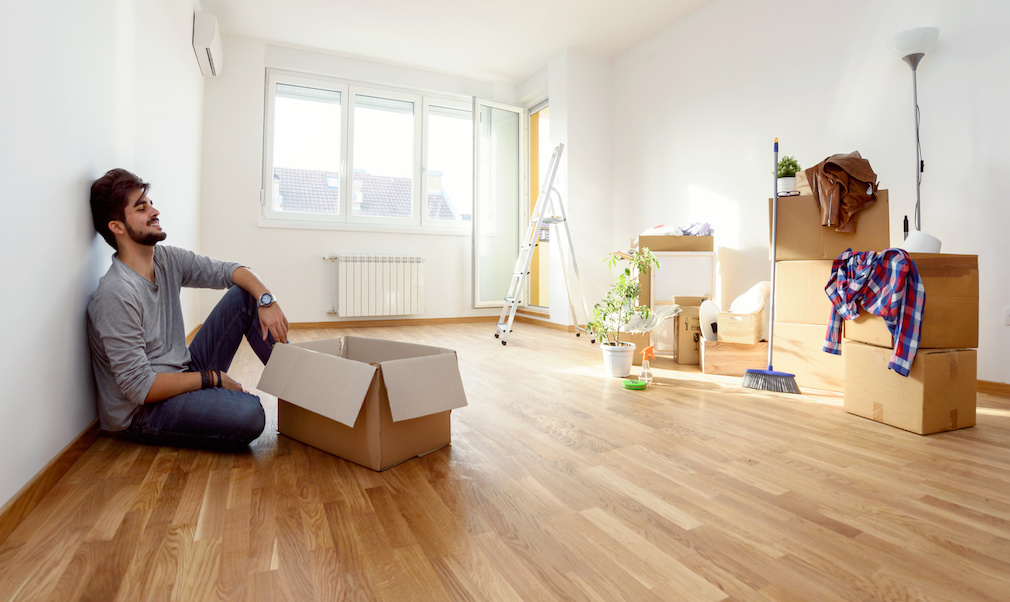At the beginning of this year, I decided to store my belongings and live without a home base for a season, living out my dream of being a true digital nomad and exploring the way people live across the U.S. Since I traveled constantly for work, it wasn’t a huge lifestyle shift for me (other than getting to shock people at conferences by explaining I really did live out of my suitcase).

Columnist
With the exception of a few people who seemed to be genuinely concerned I was living on the street, most were intrigued by the experiment. I stayed in Airbnbs, and I had a few regular routines to create my home wherever I went. My primary goal of the adventure (other than for the sake of the adventure itself) was to gain some unique insight into the way we live across America.
In late March, I was about to publish some of my insights on emerging trends about the concept of home and community when Los Angeles, my “home base” city, went into lockdown. In the wake of the pandemic, these trends, along with my nomadic lifestyle, came to a screeching halt.
While the housing market may only suffer as long as the pandemic slows transactions, consumers’ concept of home will likely shift dramatically for the long haul. In this article, I will share a few of the community lifestyle trends that were prevalent at the beginning of 2020 and the contrasting direction that may close out the year.
Mobility to Stability
“The dream of having mobility is one of the biggest barriers to homeownership,” said Nuria Rivera, owner of Novation Title. In a 2019 video about Millennial homeownership by Cultural Outreach, Nuria explained that many Millennials were not ready to settle into a particular community.
“We want to be mobile and have the ability to work remotely anywhere in the world,” she said.
Thanks to an entire industry of support services such as home sharing apps like Airbnb, communication tools like Slack, and co-working spaces like WeWork, living a remote lifestyle has become fairly accessible. One study found that 27% of U.S. workers said they “might become digital nomads,” and whether or not they would all make that shift, it shows a significant level of interest.
In a time of crisis, on the other hand, people want the opposite of the uncertainty of a nomadic lifestyle. The first principle of the Trauma-Informed Care model, which I have outlined in several previous articles and is commonly applied as a therapeutic model in crisis settings, is Safety.
Following a major crisis, people need to feel safe and secure, and they want to have a sense of control in their lives.
Many homebuyers today and in the months following may be influenced by the stability of homeownership and the comfort of owning a safe space in the chaos. The pandemic, while causing many other economic problems, may increase the desire for homeownership among Millennials, as they search for stability.
Community Living to a Space of Your Own
When my conference schedule began to slow, I had plans of moving into a co-living space, in which residents share common living spaces and upkeep. More co-living spaces have been popping up as a means of providing a short-term lease and/or a built-in community.
These spaces are usually designed for a specific type of resident such as the young professional, single mother, young family, and the list goes on. For Millennials, especially, who are postponing marriage and family more than previous generations, this living option provides a built-in community without a long-term commitment.
Trends in hospitality share similar responses to these demands for greater connection, such as the hotel chains, Freehand and CitizenM, who offer smaller rooms with shared bathrooms in exchange for affordability and an emphasis on community space.
Jordan LaRue, associate at Gensler, the architecture firm designing the upcoming CitizenM in Los Angeles, said their model appeals to a generation who values amenities and community access over space.
“There are a lot of hotel trends aiming to appeal to Millennials and affordability to compete with home-sharing apps like Airbnb where certain brands have much smaller, but trendy, rooms and focus more on the amenities and community space, like citizens,” LaRue said.
Similarly, LaRue described housing trends for an increased demand for less space in exchange for more community.
“With less Millennials having families and a lack of affordable housing, live/work spaces are more appealing and provide amenities and social interaction at a more affordable price,” LaRue said.
As people spent less time inside their homes and more time at work, commuting, or involved in community activities, their living space took a backseat in their priorities.
“Many Millennials want to own,” she said, “but don’t necessarily need multiple bedrooms and a yard if they don’t have a big family.”
During COVID-19, however, people have spent a huge amount of time in their personal living spaces. At the Mortgage2020 virtual conference last week, Jen Du Plessis, a leading business coach in real estate and lending, said she expected to see a big influx in move-up homes. She described one homeowner’s experience who stated their home was not as practical when their whole family is living in it all the time.
“There’s going to be a lot of pent up demand for people who are wanting to move and upgrade,” Du Plessis explained. “And because rates are so low, the buying power is really great right now for them to be able to buy something bigger and have a similar payment.”
And while co-living spaces seemed like a convenient option for someone like myself, who may want to stay temporarily in a city and have the immediate connections of the like-minded community, it is far from convenient during a pandemic. I spoke with a manager of one of the co-living spaces in Los Angeles who said he was very uncertain about what was going to happen to their space after the pandemic. Half of their residents had left, two of them contracted COVID-19, and one passed away. I certainly will not be pursuing a co-living option anytime soon.
Connection Transformed
Trends in housing have reflected a desire for a stronger sense of community and connection, but the pandemic will have a lasting impact on how we approach building community for months and probably years to come.
Research following other pandemics shows an increase in avoidant behavior and social isolation for many months following the resolution. One study of Hong Kong residents following the H1N1 outbreak reported a high prevalence of avoidant behaviors, including 63% of respondents avoiding going out in public places. Those with an increased distrust in local health systems demonstrated a higher likelihood of staying in their homes.
The existential need for relatedness, as defined by the famous social psychologist, Erich Fromm, has become increasingly apparent in housing trends over the last decade. However, the pandemic will require a shift in the way we meet this need.
Prior to social distancing, loneliness levels were reported at an all-time high. In a 2018 survey of 20,000 U.S. adults, half reported feeling alone and 40% stated they felt isolated. I can imagine that those numbers have significantly increased in recent weeks and will continue far beyond the re-opening of the economy.
Technology may, in part, become the transformative solution to our temporary predicament, as people have become more intentional about using video conferencing and virtual experiences. In Bowling Alone, which was written exactly two decades ago, the author wrote about how the rise of technology had progressed to the point of extreme isolation and the erosion of social capital needed for a strong society. And yet, today, technology may become the lifeline in our isolated communities.
Leadership through Housing
How we live will forever be transformed by the pandemic, and the housing industry plays a critical role in response. We will likely see an increase in desire for stability through homeownership, possibly a desire for more space and upgrades as people continue to find a safe haven in their homes, and we must continue to find ways to meet our communities’ needs for social connection.
Last week, my company, Cultural Outreach, ran a survey of 1,000 recent homebuyers, in which we found that 74% of respondents said they were more stressed about their finances as a result of COVID-19. However, we know that housing decisions, unlike any other investments, are made with a great deal of emotion.
As long as the buying power is available, these emotions will likely drive buyers toward homeownership rather than away from it.






